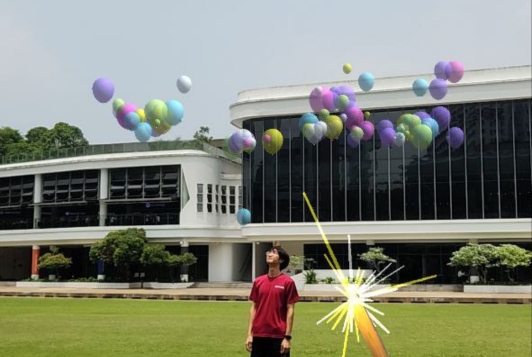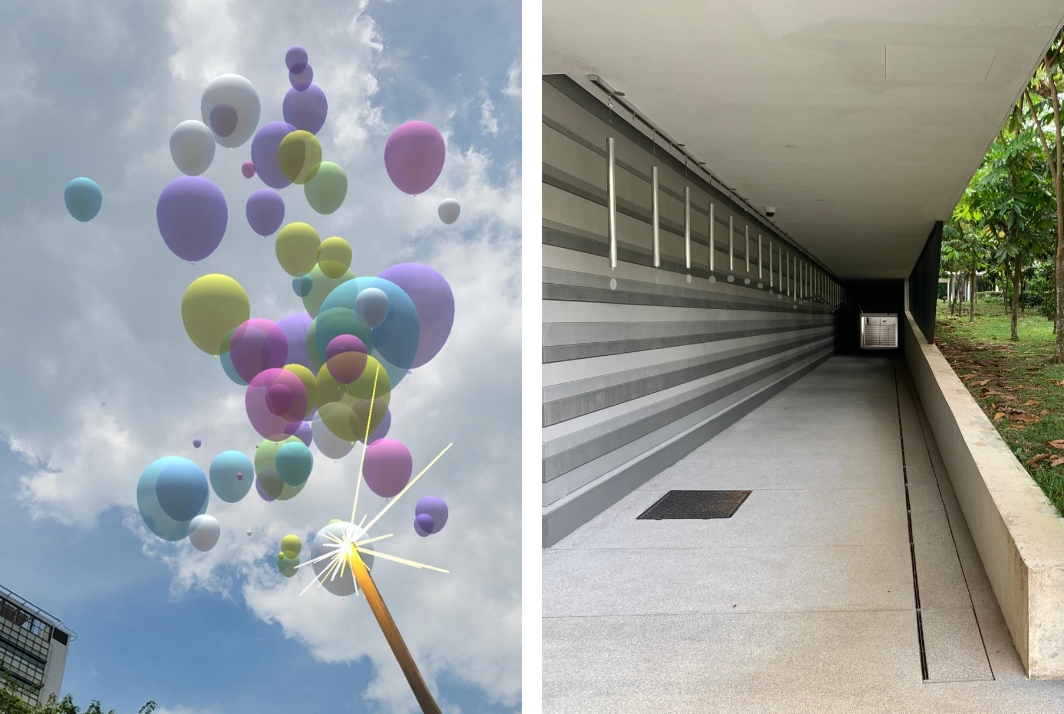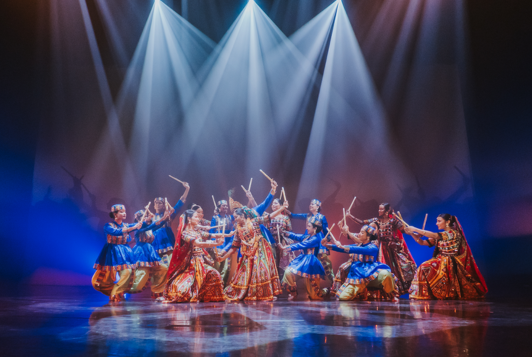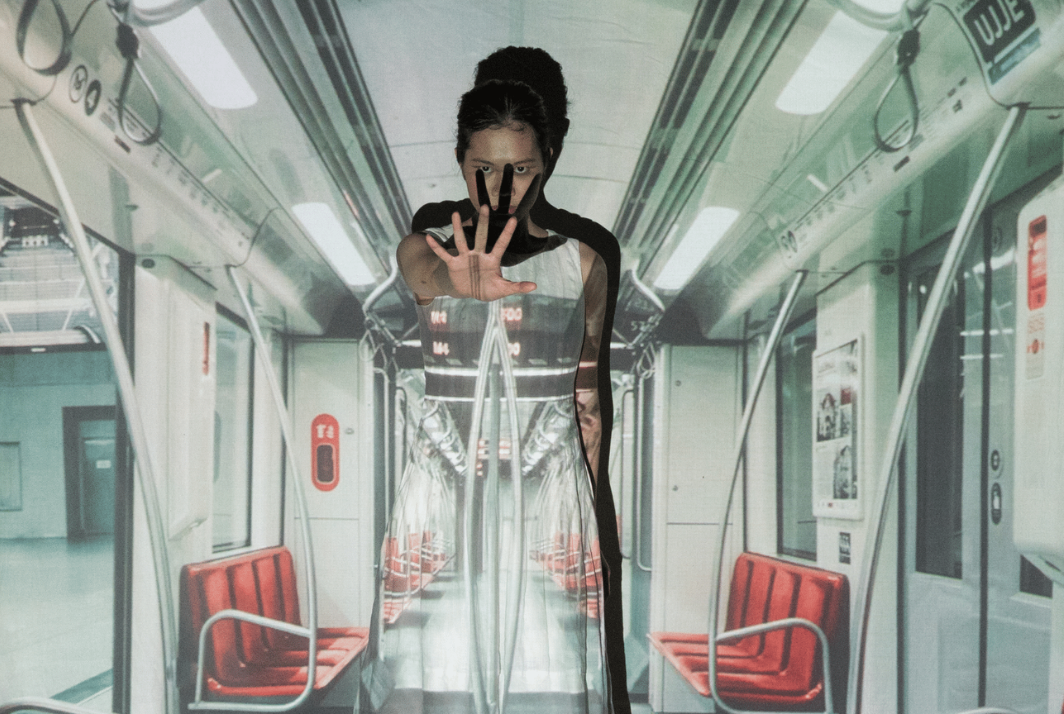The NUS Arts Festival 2023: Spaces Between may have concluded, but its impact continues to resonate on campus. From live performances to thought-provoking dialogues and immersive films, the festival left an indelible impression on the 7600 attendees who participated in the 20 programmes on offer.
For those who missed the festival, two public art installations still remain on campus, waiting to be explored. Be-Longing and Light Years, Week Days are not your typical pieces of art; they are experiential and invite you to engage with the artworks in a profound and meaningful way.
Nestled in the heart of University Town (UTown) on Town Green, Be-Longing uses augmented reality (AR) to create a visually arresting display of floating AR balloons – a powerful personification of the beauty of human connection. Through the act of “lighting” AR sparklers and “floating” AR balloons to the sky through a mobile app, participants are invited to slow down and appreciate life on campus and as a community.
Ian Hong, a third-year Computer Science student and NUS Performing and Visual Arts Scholar, and teaching assistants Emran Poh and Zhang Jiayi, created and developed the AR sculpture. Mentored and curated by NUS Museum’s curator Karen Lim and supported by Dr Bhojan Anand from the NUS School of Computing, Be-Longing will be available for public viewing till May 2023.
Light Years, Week Days is a site-specific installation that invites you to explore the movement of chimes in a way that is both mesmerizing and thought-provoking. Listen to the harmonious chimes that resonate as the gentle wind wafts through the enclosed tunnel or create your own musical pieces by interacting with the chimes. Engaging the senses of sight, sound and touch, the chimes reference Roman philosopher Pliny’s hypothesis that the constant rotation and movement of the universe emits a “sweet harmonious music”. The installation invites us to reflect on our place in the universe and contemplate the beauty of nature’s serendipitous melodies.
Light Years, Week Days is a collaborative interdisciplinary installation, that brings together the creative vision of visual artist Kate Daudy and Nobel prize-winning physicist Prof Kostya Novoselov, director of the Institute for Functional Intelligent Materials, and the curation of Karen Lim, curator of Public Art at NUS Museum.
Under the guidance of Dr Chow Jun Yan, students from the module MUA3275 Sonic Circuits at the Yong Siew Toh Conservatory of Music (YSTCM) composed the music and crafted sonic circuits as part of the installation’s art interventions. Leveraging on the knowledge of their discipline, two PhD students from the Institute for Functional Intelligent Materials, calculated the length and width of metal, and together with YSTCM students handmade the fifty chimes. The installation is on display at the Arcade of the Lee Kong Chian Natural History Museum till March 2024.
Both artworks are part of the NUS Public Art Initiative, which is supported by the NUS Public Art Committee.
We speak to the student artists and collaborators behind these artworks. Read on to discover Ian and Guang Xin’s inspirations behind these thought-provoking installations.
Ian Hong
Student Artist of Be-Longing
Year 3, School of Computing

1. Can you describe Be-Longing in your own words. What was your inspiration behind Be-Longing?
In one sentence, Be-Longing is a participatory AR artwork that hopes to capture a glimpse of the beauty of community living that I had experienced while staying in UTown.
Using their phones, viewers are invited to wield sparklers and place balloons, but when their sparklers burn out, their balloons deflate and disappear. To relight their sparklers, viewers must either walk to the AR fireplace, or simply touch another person’s sparkler.
The ideas in the work came from my experiences during my stay at the College of Alice and Peter Tan when NUS had safe-distancing measures in place. As lectures and tutorials shifted online, I got to spend most of my time with a group of very close-knit friends, supporting each other through online classes and academic deadlines. This experience was particularly significant as I came to realise that not all students had the privilege of finding such a close friend group in university.
2. Can you walk us through the creative process of bringing Be-Longing to life
Under the mentorship of the NUS Museum’s curator Karen Lim, the design process from conceptualisation to implementation took place over a duration of six months. Unlike most projects I had to do in the School of Computing, I began with only a few vague concepts about a sense of belonging and burnout. To start, we created a mind map of the key experiences I had while staying in CAPT, identifying the artistic devices that could effectively convey these notions of belonging and burnout and articulate the essence of my residential experiences at CAPT.
Thereafter, I conducted research on UTown’s architecture design, and discovered that Town Green was designed as a “a natural gathering point pluralistic in design, [that] generates and celebrates the activities within and around it, melting racial, cultural and nationalistic boundaries.“
This perspective informed my site visits, where I noted the activities that happened in and around the Town Green, and how the work could create a dialogue when juxtaposed against these activities. Of all the activities that happened there, the one that impressed upon my heart the most was that students would sit on the green slopes at night and converse as stars shined above them.
Choosing a name for the project was also of notable challenge. I experimented with various word combinations between “belongings”, “longing and “belong” before deciding on the superposition “Be-Longing”. This name incidentally lined up well with this year’s theme, Spaces Between.
After referencing other AR artworks around the globe, I began visualising and sketching how the work could look like, and drafting the interaction system. Once the concept was solidified, Emran, Georgia and I started its iterative development in Unity, coding, watching YouTube tutorials, and testing the app. Many adjustments were made after each test to get it to the form that it is today.
3. How did the choice of Town Green as the installation site contribute to the overall viewing experience?
The installation site is integral to the meaning of the work. As mentioned earlier, the work creates a dialogue between itself and the activities that happen in and around the Town Green. As a student returns to their accommodation after a long day of classes and submissions, the AR experience “celebrates” a viewer’s return to UTown with sparklers and balloons.
Additionally, though there is a wide variety of people that will come across the work, most of them may have something weighing on their mind. Hence, the work invites local students, international students, professors, university staff, and visitors to support one another by lighting each other’s sparklers when they burn out, and the diversity of the audience is part of the viewing experience.
Curator’s Note: Town Green is conceptualised for the future display of curated AR sculptures. Instead of seeing art indoors, one can experience art in the heart of UTown.
4. What do you hope viewers will take away from their experience with Be-Longing and how do you think the artwork speaks to larger themes in society
Once the final iteration of Be-Longing is completed, I hope viewers will get to experience a small act of mutual support through the interaction of light each other’s sparklers – whether it be through a friend or stranger. This act embodies the four elements of a sense of community from McMillan and Chavis’ (1986) theory which is defined by a sense of belonging, a feeling that community members matter to each other, and a shared faith and commitment to be together. I hope that this experience allows viewers to not only feel supported but also empowered to make a difference and influence others in the temporary community of viewers.
As we transition from the education system to society at large, we may encounter challenges and moments that we feel that we don’t belong. However, it’s important to remember that opportunities to cultivate a supportive community exist everywhere. Although such youthful idealism of youth may be eventually replaced by the limitations of reality, I hope that Be-Longing can serve as a reminder that such a community is worth working towards.
5. What role do you think technology can play in the arts and creative expression
The technology of today extends, connects and democratises art-making. Just last month, I, an amateur 3D modeler was able to create 3D models in real-time using my virtual reality (VR) headset , connecting with peers from Germany, USA and China through a virtual platform, VRChat.
The canvas is now broader than ever before. As someone who specialises in spatial computing, I have witnessed how this medium has transformed the way we create and experience art. With extended reality, artists are no longer limited to traditional mediums such as objects, spaces, or performances. Instead, they can transport viewers into entirely different realities, tweaking every aspect of the environment down to the smallest detail. With the ability to shrink viewers to the size of an ant or manipulate the laws of physics in a virtual world, the possibilities are endless.
I can’t wait to see what people do with the paint of today.
Tan Guang Xin
Student from the YSTCM module MUA3275 Sonic Circuits who was involved in the development of Light Years, Week Days
Year 2, College of Design and Engineering

1. How was Light Years, Week Days introduced to your team? What were your initial thoughts?
The installation was introduced to us by Dr Chow at the start of the module MUA3275 Sonic Circuit and Live Interactivity. It was explained to us as a collaborative installation with elements that required interdisciplinary collaboration. I was excited by the prospect as I have never taken part in an art installation.
2. What was the collaborative process like between the YST students and the NUS Institute for Functional Intelligent Materials? Can you describe the creative contributions of each group and how did they complement each other in the development of the installation.
The YST students and NUS Institute for Functional Intelligent Materials collaborated on designing and implementing the wind chimes. The melodies that the YST students had in mind were relayed to the NUS Institute for Functional Intelligent Materials where they were able to calculate the dimensions of the pipe sections needed to fabricate the chimes. In addition, the YST students assisted in fabricating the chimes and designing the sonic circuits that are installed alongside the chimes.

3. What do you believe is the message that Light Years, Week Days is trying to convey?
I believe that Light Years, Week Days aims to utilise the randomness of the wind chimes to invite visitors to spontaneously interact with the installation. This illustrates how people can improvise in seemingly random situations to produce pleasing results.
4. How did your involvement in this project complement your learning experience of the module MUA3275 Sonic Circuit ?
My involvement in the installation allowed me to better appreciate the purpose of how circuits are being designed and fabricated. During the module, I had hands-on opportunities to build simple circuits like amplifiers. From there, we were allowed to come up with our own circuit designs that were used to visualise the vision we had. The process was iterative with design revisions to better suit our vision. Additionally, I developed a better understanding of how artists design and develop their works. This is a valuable insight as I do not have much prior experience in such artistic projects.
5. Can you share any interesting reactions from your peers or friends who have interacted with the installation?
An interesting experience was how different people interacted with the installation differently. While some visitors played with the circuits, others had fun running back and forth, hitting the wind chimes to produce the melody.
Watch our Be-Longing and Light Years, Week Days TikToks and learn how to get to the site to experience the installations for yourself.
Share:
Contributor
Office of Student Affairs.




